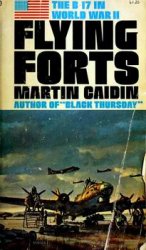The assassination of Archduke Francis Ferdinand on June 28, 1914 in Sarajevo triggered the Austrian-Hungarian ultimatum to Serbia and then hostilities that quickly assumed all-European dimensions. To begin with Hungary, it could hardly expect anything from the conflict and Premier Tisza opposed war until overridden by the emperor. As in the case of virtually all belligerent nations, the Hungarians temporarily settled their political differences. But hardly anyone among them was prepared for the long duration of the conflict and the untold sufferings it would bring. Indeed, the cost of the war proved staggering. Almost one and a half million people were killed, wounded, or taken prisoner. Shortages of basic commodities and a rampant inflation made life miserable. From 1915 the social democrats began to oppose war; by 1917 the group of Karolyi and Jaszi came out with demands for peace, universal suffrage, and somewhat ill-defined projects for the federalization of Hungary. The political establishment headed by Tisza resisted, and it took a great deal of pressure from the new ruler, Emperor-King Charles, for Tisza to resign, in June 1917.
By this time the war had entered a clearly ideological stage. The two revolutions in Russia reverberated throughout the world as did President Wilson’s proclamations in favor of national self-determination. In Hungary socialist agitation increased among the warweary masses; on May 1, 1917 there were massive demonstrations; the culminating point was reached with the general strike in Budapest in January 1918. The efforts of Charles to extricate the monarchy from the war through a separate peace misfired. His last-minute attempt to federalize the empire in October 1918 made Budapest declare the end of the Compromise. Only a personal union briefly linked Austria and Hungary while Karolyi formed the Hungarian National Council. A subsequent revolutionary upheaval brought to the fore a Karolyi government. Tisza, seen by many as responsible for the country’s misfortune, perished from an assassin’s bullet.
Karolyi’s government represented an independent Hungary that would be drastically transformed through universal suffrage, land reform, and democratization. His government sought to retain the allegiance of the nonMagyar nationalities through some form of federalist arrangements, even by making Hungary part of a Danubian United Nations. Distancing himself from the past Karolyi hoped to have Hungary treated by the Allies as a “new” state, and by concluding a separate armistice at Belgrade protect its territorial integrity against its neighbors’ encroachments. These proved to be unrealistic expectations.
True, in the early stages of the war the Croats, whose troops fought well, might have been satisfied with a trialist (Austro-Hungarian-South Slav) solution. In 1917, however, the Yugoslav emigre committee (representing the monarchy’s Croats, Serbs, and Slovenes) concluded the Pact of Corfu with the government of Serbia. It called for a common kingdom of Serbs, Croats, and Slovenes. In October 1918 the sabor officially dissolved the union with Hungary and joined the newly created state. The Slovaks and Transylvanian Romanians were passive in the early war years; there were hardly any desertions from the army. But the Allies promised Transylvania to Romania in the secret Treaty of Bucharest of 1916, and when the war ended faits accomplis in the province placed Transylvania and adjacent territories in Romanian hands. The Allies ordered Hungary to evacuate Slovakia. Thus before the Paris Peace Conference met Hungary had been reduced to the core of its prewar territory and was open to further encroachments by Czechoslovakia, Romania, and Yugoslavia. With the French army behind them, Budapest was powerless. Karolyi resigned in March, and as the communists took over, Hungary’s future was a question mark.
The story of Czechs and Slovaks during the First World War was completely different from that of the Hungarians. The latter were trying to salvage their state in the midst of a conflict into which they had been drawn much against their will and interest. The former two were bent on creating their own state out of the ruins of the Habsburg monarchy. This was a bold undertaking and the Allies had to be persuaded of its merits.
The Czech nation was not politically prepared for war and all its possible consequences. The program of independence was taken up by Masaryk, who despaired of any other solution and went abroad toward the end of 1914. He was joined later by E. Benes and assisted by M. Stefanik, a Slovak who lived in France. These men became the leaders of the “struggle abroad” movement, as distinct from the “struggle at home” trend associated with Kramar. The latter initially placed his hopes in the liberation of Czech lands by the tsarist armies and thought of some connection between Bohemia and Russia. But he also cooperated with Masaryk and Benes through the political group known as the Maffie. The difference between the two trends was largely a matter of emphasis (with the West or with Russia), but it became magnified and affected domestic politics after 1918.
Masaryk and Benes had a difficult task. The Czech question was viewed as an internal matter of the Austrian monarchy, which the Allies had no intention of destroying. Masaryk and Benes seemed isolated, for the major Czech political parties followed pro-Habsburg policies out of loyalty, fear, or opportunism. Even as late as January 1917 they disavowed Masaryk’s and Benes's activities abroad. It was only when the specter of a German-dominated Mitteleuropa began to haunt the Allies in 1916 that plans for a “new” East Central Europe replacing Austro-Hungary received serious consideration.
Under the impact of the February and October Revolutions (actually of March and November 1917) in Russia, and the growing hardships at home, the Czechs began openly to demand a federalization of the monarchy. A self-governing Czechoslovak state would be part of it. The Slovaks, incidentally, could thus far play no active role, for they had no contact with Prague until April 1917.
The Czechoslovak National Council (its name varied) presided over by Masaryk and established in Paris in the spring of 1916 now stood a greater chance of having its demands for national independence recognized by the Allies. The issue of a Czechoslovak army came to the fore. The Russian Provisional Government declared in favor of an independent Czechoslovakia, and a Czechoslovak brigade formed in Russia fought a victorious battle at Zborow in July 1917. But the outbreak of the bolshevik revolution complicated matters. The Czechoslovak leadership sought to avoid any involvement of the Czechoslovak legion in the Russian civil war, and wished to bring the troops to France. But the situation got out of hand and the legion found itself struggling against the bolsheviks in its Siberian “Anabasis.” Some 50,000 Czech soldiers controlling the trans-Siberian railroad were performing a service to the Allies disproportionate to their size. Although the story is complex and Masaryk’s role controversial, it is certain that the legion greatly assisted Czechoslovak efforts to secure Allied official recognition.
This goal was not reached easily. The organization of Czechoslovak troops in France and Italy (out of Austrian prisoners of war), the Congress of Oppressed
Nationalities in Rome—a major anti-Habsburg demonstration—and Benes’s skillful diplomacy were, however, paving the way. The Pittsburgh Agreement was concluded in Masaryk’s presence by Czechs and Slovaks in America in favor of a common state, and was a significant move. But in the final analysis the fate of Czechoslovakia depended on the Allied attitude toward the maintenance of the Austro-Hungarian monarchy. In January 1917 the Allies spoke vaguely of a “liberation of Czechoslovaks from foreign domination.” Wilson’s Fourteen Points insisted merely on the “freest opportunity of autonomous development” for the Czechs. The situation underwent a change in the spring of 1918. The Epiphany declaration of Czech deputies for complete self-determination and for Czechoslovakia’s participation in a peace conference showed how far the process of disintegration had gone. In October 1918, Charles’s federalist manifesto came out simultaneously with Masaryk’s declaration of Czechoslovak independence. On October 28 independence was proclaimed in Prague and a day later by the Slovaks.
A new state arose, already recognized as a belligerent ally. It was shortly in control of most of the territories it claimed: the lands of the Crown of St Wenceslas and Slovakia. Its borders were yet to be drawn officially, but President Masaryk and the foreign minister Benes could count on Allied support. Indeed, this point was stressed when Masaryk spoke of bringing to the Czechs “independence on a plate,” although he later also said, “Our independence was truly bought with blood.”52 This was a reference to the struggles of the legion in Russia and to sacrifices at home. Kramar, who was at one point charged with treason and sentenced to death, insisted that without these actions the diplomacy of Masaryk and Benes would have been vain. Here were the germs of a controversy that has not abated to the present day.
Polish strivings for independence during the war were much more complex than those of the Czechs. The fact that Poland was divided among three powers made it potentially an international issue, and with two partitioners (Germany and Austro-Hungary) facing the third (Russia) there was some hope and room for maneuver. Yet the victory of either side would still be a victory by an oppressor. What is more, an average Pole could hardly imagine that after 120 years of partitions a free and independent Poland could re-emerge.
Dmowski’s conviction that Germany was Poland’s main enemy led him to tie the Polish question to the Franco-Russian alliance. The manifesto of the Russian commander-in-chief, Grand Duke Nikolai Nikolaievich, promising the Poles unity under the tsar’s scepter, seemed encouraging. But deeds did not follow words. When the German-Austrian armies drove the Russians out of the kingdom in 1915, Dmowski left for the West. There he went beyond his original advocacy of Poland’s unification, and spoke openly of full independence. The Allies were cautious. Poland, they felt, was Russia’s business, and Petrograd resented outside interference. Moreover, Dmowski represented but one of the main Polish trends, the second being the anti-Russian and by necessity pro-Central Powers current of Pilsudski.
To Pilsudski and the Polish left, Russia was the main obstacle to independence, although full independence could only come with the collapse of all three partitioning powers. Dmowski viewed such a contingency unrealistic; Pilsudski ruminated that the Central Powers might first defeat Russia and then succumb to the West. In any case war would so weaken the partitioners that even a small Polish armed force could play a disproportionately large role. Insisting that the Polish sword must not be absent from the combat, Pilsudski headed the legion operating out of Galicia. Although this placed him on the side of the Central Powers, Pilsudski (unlike Galician conservatives) treated the cooperation with Vienna as tactical. When the Russians were forced out of the Kingdom, Pilsudski escalated his political demands when negotiating with the Austrian and German authorities, and requested maximum concessions. Emphasizing that the Poles could fight only under their own flag, he sabotaged the creation of a Polish army sponsored by the Central Powers, and proceeded to build up a clandestine Polish Military Organization (POW). On November 5, 1916, Berlin and Vienna issued the Two Emperors’ Manifesto announcing the establishment of a free Kingdom of Poland. Its borders as well as the form of its association with one or both Central Powers were left unspecified. Russia denounced the manifesto as a breach of international law, but had, in the tsar’s order of the day, to promise on its side freedom and unity to the Poles.
The Central Powers set up a Polish Temporary State Council in the Kingdom within which Pilsudski pursued his own aims. With the outbreak of the revolution in Russia, he opined that the Central Powers had now replaced the former tsardom as the main threat to Poland. A conflict was unavoidable, and in the summer of 1917 the Germans imprisoned Pilsudski in the fortress of Magdeburg. The legions were disbanded and partly interned. The Central Powers, however, proceeded with the creation of a Regency Council and a rudimentary Polish administration, judiciary, army, and education in the Kingdom.
These developments provided Dmowski with the argument that unless the Allies did something for Poland the Germans would be able to make use of all Polish resources for their own ends. While Dmowski was active in Paris and London, setting up in August 1917 a National Polish Committee as a spokesman in the Allied camp, Paderewski was propagating the Polish cause in the United States. Through Colonel House he gained access to President Wilson. In January 1917 Wilson had already affirmed, in his Peace without Victory address, that statesmen everywhere were in favor of a united and free Poland. In late March the Russian Provisional Government and the Petrograd Soviet came out for Polish freedom, yet it seemed clear that Russia meant to keep Poland within its sphere of influence. All this changed with the bolsheviks gaining control and the separate peace with the Central Powers in Brest Litovsk in March 1918. The West not only lost its Russian ally, but felt threatened with a social revolution from the East. A Polish state appeared under these circumstances not only a matter of justice but of interest to the Allies, particularly to the French. As for those Poles who pursued pro-Central Powers policies, the Treaty of Brest Litovsk (which injured Polish interests) marked the end of their hopes.
A Polish army composed mainly of volunteers from America and commanded by General Jozef Haller came into existence in France. It was placed under the political authority of the National Polish Committee. In January 1918, the thirteenth of Wilson’s Fourteen Points affirmed the need for the creation of an independent Poland, composed of an indisputably Polish population, and with a secure access to the sea. On June 3 the Inter-Allied Conference confirmed that such a Poland was one of the conditions of a just peace. Events now moved fast. With Austro-Hungary crumbling and the federalist manifesto of Charles coming too late to save it, the Poles of Galicia regarded themselves as part of a rising Polish state. The government of the Congress Kingdom sought to emancipate itself from the Regency Council and declared independence. The parties of the left in turn proclaimed in Lublin the government of a People’s Poland. On November 10 Pilsudski, released by the Germans, arrived in Warsaw. Both the Lublin government and the Regents handed over to him all political and military powers. Pilsudski was thus in control of the Kingdom (which he succeeded in peacefully clearing of German troops) and of the western part of Galicia. In eastern Galicia, where the Ukrainians had proclaimed an independent republic, fighting began. All other borders were in flux, with clashes occurring; and from the east the bolshevik threat loomed large.
Paris wanted to recognize Dmowski’s Committee as Poland’s government, and although the British and the Americans prevented it (mainly because of its rightist character), the Committee remained a rival to Pilsudski. By January 1919, however, a compromise occurred. Pilsudski remained head of state, Paderewski became premier, and Dmowski would represent Poland at the forthcoming Paris Peace Conference. It was up to the Allies to draw the definitive borders of Poland, Czechoslovakia, and Hungary, but a new and independent East Central Europe was already in existence, although it was tumultuous, ravaged, and internally divided.




 World History
World History









